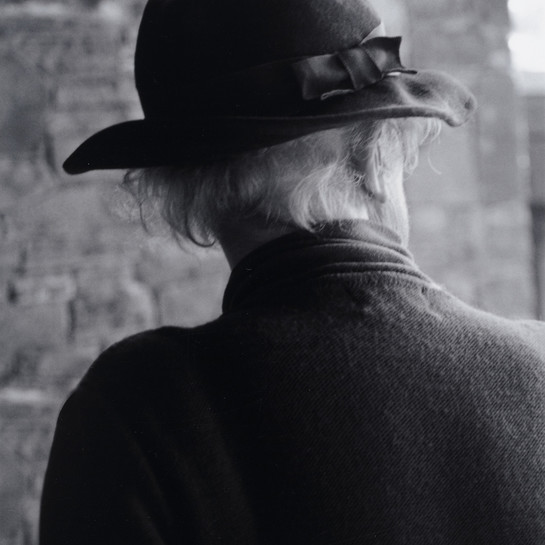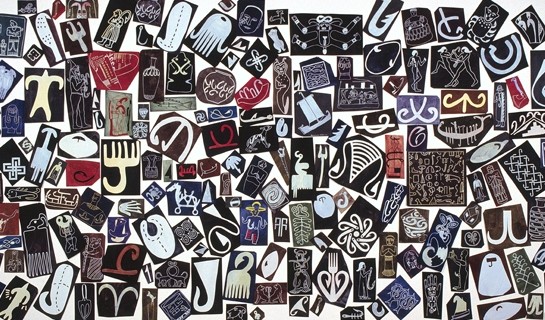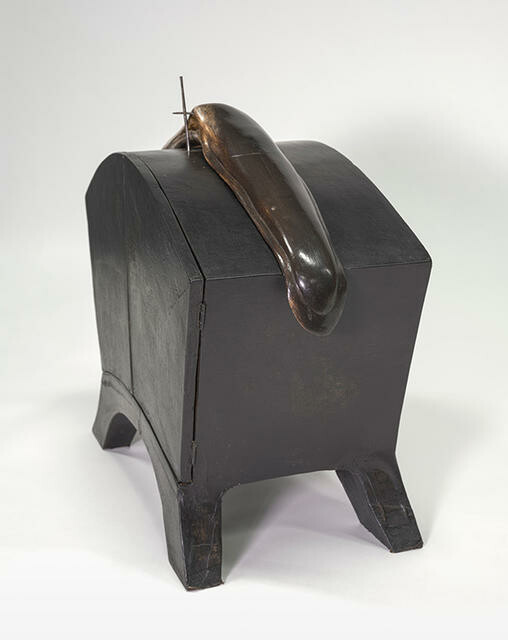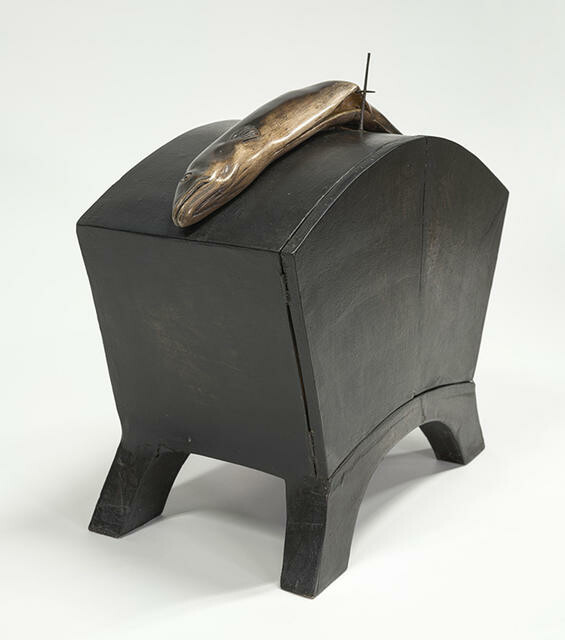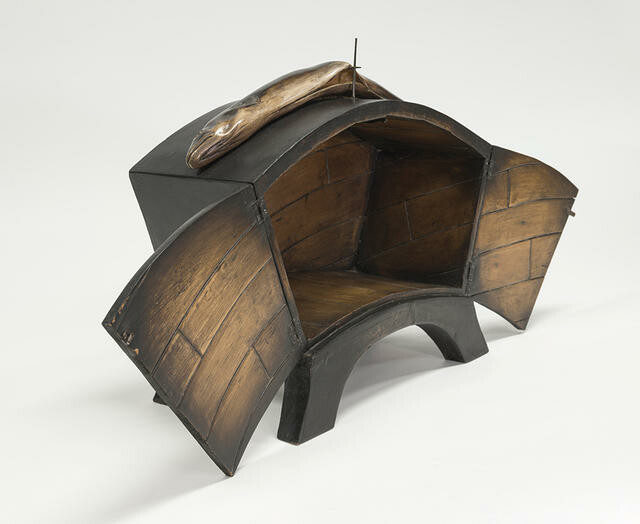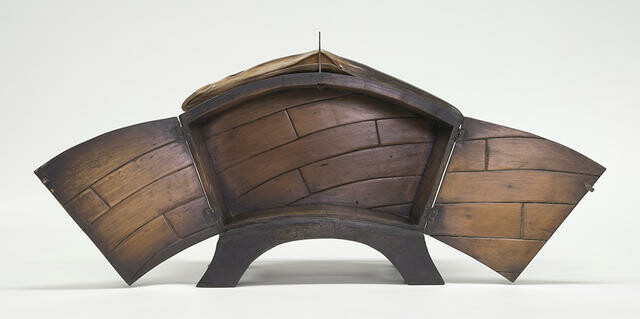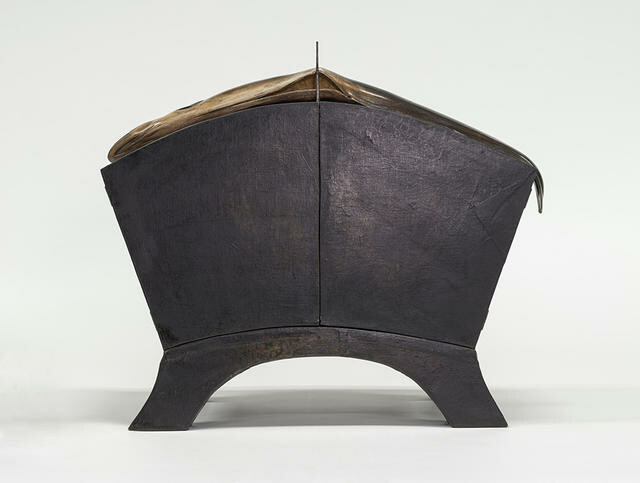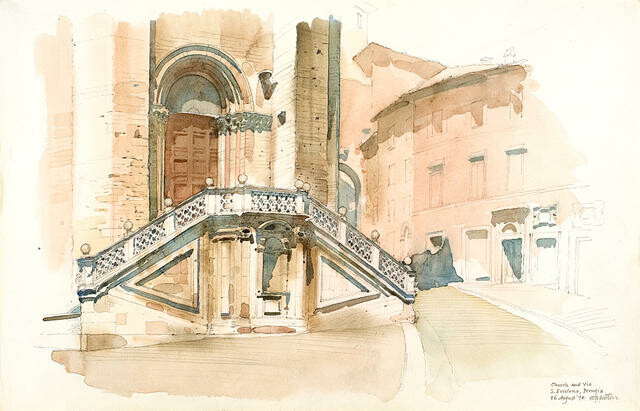Bing Dawe
Aotearoa New Zealand, b.1952
Eel - Birdling’s Flat - Black Stones Waitaki River
- 1997
- Carved painted wood and printed canvas
- Purchased, 1999
- 485 x 1063 x 258mm
- 99/89
Tags: animals, cabinets (case furniture), eels, fish (animals)
To make this sculpture, Bing Dawe called on his memories of fishing at Te Mata Hāpuka, also know as Birdlings Flat, a stony beach not far from Waihora Lake Ellesmere. Waihora is a culturally significant mahinga kai, or source of food, for Kāi Tahu that has become so heavily polluted it can no longer sustain life. Dawe’s title also connects this work with his childhood experience of growing up near the Waitaki river in north Otago, where he found the remnants of Māori hāngī sites in circles of blackened stones. The curved cabinet, and the gutted eel laid over it, echo the arc of the earth, suggesting a once abundant environment now empty of nourishment; the cupboard left bare.
(Absence, May 2023)
Exhibition History
Bing Dawe has said of this work, "It reflects memories of fishing at Birdling’s Flat, where the cabinet becomes like a simplified landscape and the gutted eel lies upon it... Both are empty now but once were full of life or nourishment." Many of Dawe’s works have used the metaphor of the river to explore ideas about the human condition and our place within, and effect upon, our environment. By placing a realistically depicted eel on the functioning, but empty, cabinet Dawe deliberately crosses the traditional boundary between fine art sculpture and beautifully-fashioned craft furniture. Dawe was born in Glenavy, by the Waitaki River, in North Otago. He graduated from the University of Canterbury in 1976. Since 1974 he has exhibited throughout New Zealand and internationally, including at the 1992 ‘World Expo’ in Seville. Dawe has completed many public commissions and won a number of significant awards.
(Date unknown)
